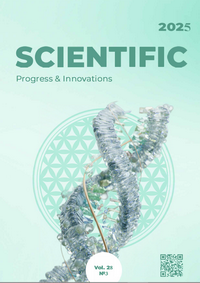The peculiarities of dairy cows’ treatment for subclinical endometritis
DOI:
https://doi.org/10.31210/spi2025.28.03.27Keywords:
dairy cows, subclinical endometritis, treatmentAbstract
Subclinical endometritis in dairy cows is one of the reasons of their infertility. Without having obvious clinical signs, this disease decreases cows’ fertility, which is manifested by lowering the level of impregnation capacity, increasing insemination index, growing the number of concealed abortions, and, thus, the increase in the amount of infertility days. As a result of the above mentioned, farms suffer considerable economic losses connected with getting not enough calf crop, milk, and also keeping and the treatment of infertile cows. The purpose of our studies was to find the effectiveness of various treatment schemes of cows suffering from subclinical endometritis. The work was conducted on different farms of Kharkiv and Poltava regions. The research was made on infertile cows of Ukrainian local dairy breed and black Holstein aged 4–9 years on the 80–120th day of lactation. Subclinical endometritis was diagnosed by cows’ gynecological examination and ultra-sonography of their reproductive system. The treatment of animals (n=103) was conducted using anti-bacterial and anti-inflammatory preparations, the preparations of prostaglandin F2α and uterotonics (the schemes varied depending on farms). The efficacy of treatment was determined by ultra-sound diagnostics of cows’ genitals on the 5th day after the treatment and ultra-sound diagnostics of pregnancy on the 30–35th day after insemination. It was found that in case of subclinical endometritis, the increase in the average diameter of the horns of uterus to1.5±0.06 cm took place with the presence unechogenous content in the uterus and endometrium thickening to 0.32±0.02 cm. The ovaries of all the cows were active having follicles and yellow bodies of different maturity degrees. The concurrent inflammatory processes in the genitals were not revealed. The use of treatment scheme including ichglucovit, estrofan, oxytocin, ceftiofur and prozerin, ensured the recovery of 89 % of the cows suffering from subclinical endometritis. In case of the therapy consisting of ceftiocline, kefen and uterotone, 76 % of cows recovered. The level of cows’ infertility on these farms was 130±10 and 132±9, respectively (p<0.05). The complex treatment of cows using galapan, climexin and the tincture of hellebore by intrauterine application as well as the scheme including vetapirin, vetaglan and metrin were less effective; in this case, about half of the cows recovered with infertility days of 155±10 and 145±11, respectively (p<0.05). After the treatment, the cows were inseminated rectally-cervically with frozen-defrosted semen in payettes with the interval of 12 hours by the fact of natural estrus. In this case, 82.5 % of cows (n=85) were impregnated, of which 72.9 % had insemination index of 1.5±0.5, and 23.5 % of animals – 3.5±0.5. 17.4 % of animals (p<0.05) remained infertile.
Downloads
Published
How to Cite
Issue
Section
License
Copyright (c) 2025 Scientific Progress & Innovations

This work is licensed under a Creative Commons Attribution 4.0 International License.

 Creative Commons Attribution 4.0 International Licens
Creative Commons Attribution 4.0 International Licens